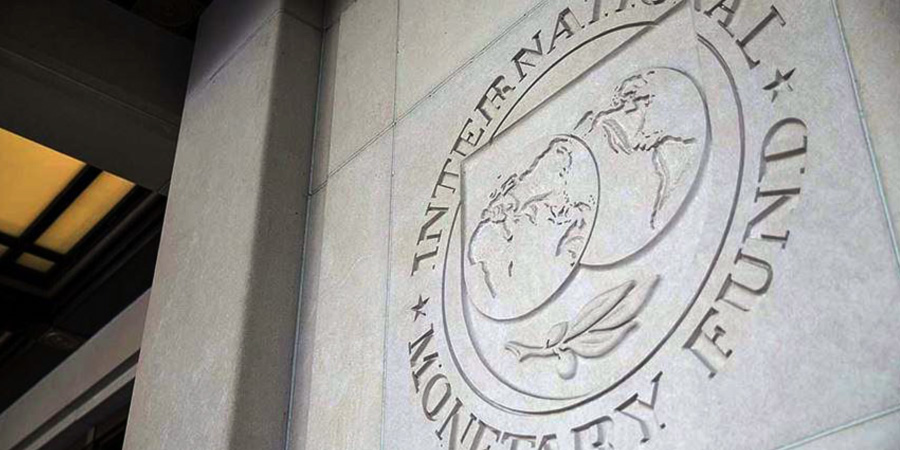The International Monetary Fund (IMF) has strengthened its focus on climate resilience policies. In Mozambique, although important progress has been made, there are challenges ahead. The aim is to strengthen the country’s defence mechanisms, says Alexis Meyer-Cirkel, IMF resident representative in Maputo.
Mozambique has had a policy framework to deal with the effects of climate change for exactly a decade. It is called the National Strategy for Adaptation and Mitigation of Climate Change 2013-2025. In addition, a set of cross-cutting actions is indicated for all sectors, including institutional and legal reforms, training and technology transfer.
This aspect is still a concern, according to the IMF representative in Mozambique, Alexis Meyer-Cirkel, who, in this brief interview, shared the essential points about the way the Executive is conducting national climate resilience policies, the progress made, the prevailing challenges and, above all, the various instruments that the institution has available to help the country in this area.
How does the IMF assess the budgetary resources set aside to deal with natural disasters in Mozambique?
For a country with fragilities, under conflict and with a high level of public debt, the impact that extreme weather events have on the economy is exacerbated by this limitation in response capacity. The budget law stipulates that the government allocate 0.21 per cent of total expenditure to meet unforeseeable and unavoidable expenses, particularly natural disasters. However, given the high frequency of storms – two to three events a year – and the magnitude of these shocks, affecting more than a million people, the state’s contingencies have not been sufficient for a full response. However, the government, with the support of various partners, has been carrying out various actions as part of the implementation of its national climate change adaptation strategy, approved in 2013.
What are these actions and how has the IMF helped to iron out the weak points?
The IMF’s main responsibility is to monitor economic and financial policies in member countries and provide advice. In this process, the organisation identifies potential risks to the economy and recommends adjustments to guarantee macroeconomic stability, promote financial stability and sustain growth.
“Interest in RST funds among IMF members is high and resources are limited, but we are working to try to make this support viable for the country,” Alexis Meyer-Cirkel, IMF
The risks of extreme weather events and climate-related opportunities have gradually been integrated into the IMF’s advice to its members. The focus has been on developing capacities to support adaptation, mitigation and the transition to low-carbon economies. At the same time, there is also financing through a complementary programme, the Resilience and Sustainability Trust (RST), introduced last year. The aim of the RST is to support low-income countries, strengthen their resilience to external shocks and ensure sustainable growth, contributing to the long-term stability of their balance of payments.
It is worth mentioning that the IMF’s intervention in these matters has been done in collaboration with other development institutions, such as the World Bank.
But doesn’t the transition to a low-emission economy require other forms of follow-up?
In the transition to low-carbon economies, we have been analysing specific policy issues through the Climate Policy Assessment Tool (CPAT), which analyses the impact of carbon pricing and other policies on the commitments made in Paris, as well as the impacts of energy subsidies, Climate Public Investment Management Assessments (C-PIMA), Climate Macroeconomic Assessment Pilot Programmes (CMAP), along with other more specific financial sector issues related to climate risks and public policies to support the transition.
Could Mozambique benefit from the Resilience and Sustainability Fund (RST) you mentioned?
Like other IMF financial instruments, for a country to have access to the RST, there is a protocol to be followed. Firstly, it must have a financial programme underway, with more than 18 months to go until it expires – in Mozambique’s case this is the current Extended Credit Facility (ECF). Secondly, disbursements are anchored in a series of policy reforms to be implemented within an agreed period of time – in this case, climate change-related reforms. The evaluation of these reforms is done at the same time as the evaluations of the ECF programme.
“It is true that the existing funds are small compared to the needs. That’s why mobilising additional resources remains a priority,” Alexis Meyer-Cirkel, IMF
The government has shown interest in accessing the RST to address structural obstacles to strengthening resilience to climate change and pandemic preparedness. There is ongoing work for the potential RST in Mozambique, including interaction with the authorities and development partners. Some potential areas for reform have been identified and, in addition, a climate policy gap assessment mission associated with C-PIMA will take place next year to support the design of reform measures.
Interest in RST funds among IMF members is high, and resources are limited, but we are working to try to make this support viable for the country.
There are several other instruments to support resilience, but they are too few for so many needs. How can this equation be resolved?
Coping with the impact of climate change requires a combination of efforts from the various players to increase resilience, especially in low-income countries, which are highly vulnerable to extreme shocks. It is true that existing funds are small compared to needs. Therefore, mobilising additional resources remains a priority, but we also need to establish clear coordination mechanisms and strengthen the institutional framework to better respond to the climate agenda.
On the other hand, opportunities are emerging with the development of new sources of climate finance, complementary to existing ones. These are initiatives by multilateral and bilateral organisations. For example, carbon credits, green public bonds and other options that include debt-for-climate swaps, although they are still very limited in sub-Saharan Africa.
